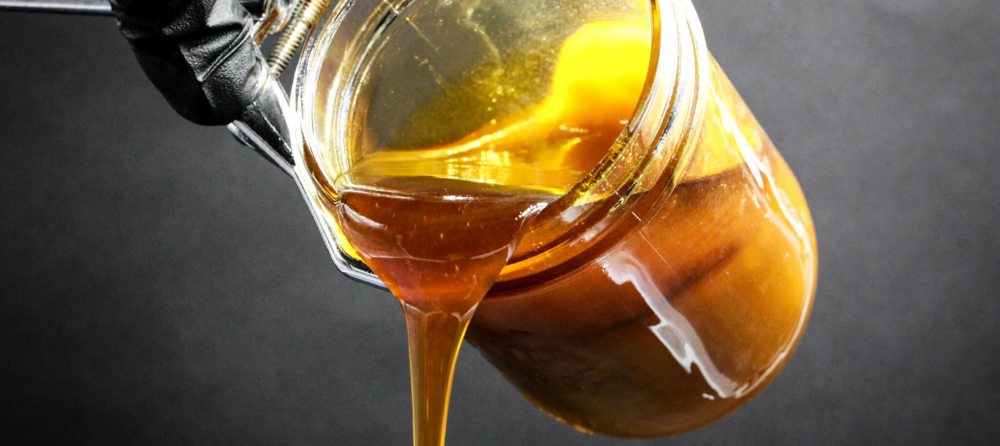THC Oil Consistency & CBD Oil Thickness (Viscosity Guide)
May 8, 2025 – Denis G

If you’ve ever had a vape pen hit too harshly, leak unexpectedly, or produce little to no vapor, the culprit probably wasn’t the hardware—it was the oil viscosity.
Viscosity—how thick or thin your THC or CBD oil is—directly affects how well your cartridge wicks, heats, and delivers vapor. Learning how to match your oil’s consistency to your vape hardware can save you from clogging, leaking, and the dreaded burnt hit.
So, What Exactly Is Viscosity?
In simple terms, viscosity describes a liquid’s thickness or flow. Honey is thick and slow—that’s high viscosity. Water flows easily—that’s low viscosity.
Cannabis oils fall on a wide spectrum, depending on how they're made and what’s added to them. Here’s a quick breakdown to give you an idea:
Approximate Viscosity at Room Temperature (~20–25°C / 68–77°F)
| Type of Cannabis Oil | Viscosity Range (centipoise, cP) | Characteristics |
|---|---|---|
| Pure THC Distillate | 100,000 – 500,000 cP | Thick, sticky, nearly solid at room temp |
| THC/CBD with 5–10% Terpenes | 10,000 – 100,000 cP | Flows more easily, rich aroma |
| Cut Oils (MCT, PG, or VG blends) | 100 – 10,000 cP | Very fluid, high risk of leaking |
| Live Resin / Rosin Oils | 20,000 – 150,000 cP | Medium-high viscosity, depends on terpene content |
A Few Quick Notes:
-
-
Pure distillate behaves like molasses—hard to fill without heat.
-
Adding 5–10% terpenes or flavor diluents lowers viscosity dramatically.
-
Heating oil to 80–100 °C (176–212 °F) during filling can reduce viscosity by 80% or more.
-
Why Oil Thickness Affects Vape Performance
Let’s look at what can go wrong—and why viscosity is often the culprit.
1. Thick Oil Can Cause Dry Hits or a Burnt Taste
When your oil is too thick for the vape coil to wick properly, it doesn’t reach the heating element fast enough. You take a hit, but the coil is dry—resulting in a burnt flavor.
How to fix it:
-
Slightly heat the cartridge before vaping or use a preheat setting.
- Heat thick oil to 80–100°C (176–212°F) before filling. This improves flow, helps saturate the coil, and prevents burnt hits.
-
Add more cannabis-derived terpenes or diluents to improve flow, if your hardware allows.
-
Let the oil sit in the cart overnight after filling, especially with thicker blends.
2. Thin Oil Can Lead to Leaks
On the flip side, oil that’s too thin can flood the chamber or leak out of the mouthpiece. This happens a lot when oils are over-diluted or used in hardware with large intake holes.
 How to fix it:
How to fix it:
-
Choose the right vape hardware for thin oil—ideally with tighter seals and smaller intake holes. Find the vape hardware is designed for the thin oil
-
Avoid over-cutting with diluents like PG, VG, or MCT.
Choosing the Right Vape Hardware for Your Oil
Different vape pens and cartridges are built for different oil viscosities. Here’s a general guide:
| Type of THC Oil | Viscosity Range (cP) |
|---|---|
| Pure THC Distillate | 100,000 – 500,000 |
| With 5–10% Terpenes Added | 10,000 – 100,000 |
| Cut Oils (e.g., with MCT or PG) | 100 – 10,000 |
Not all vape hardware is built the same—and choosing the right one based on your oil’s thickness can make a big difference.
If you're working with thin oils (such as blends with high terpene content or cut with MCT/PG), it's important to use hardware designed to prevent flooding. Our Smart and Deve disposables are excellent choices for thinner oils, offering tight seals and smaller intake holes that reduce the risk of leaking or gurgling.
If you're using supper thick oils, you'll need hardware with larger intake holes and strong coil saturation. In that case, our V22 and Smart models are ideal. These are specifically engineered to handle from medium to supper high-viscosity oils without clogging or dry hits.
In general, if you're working with super thick oil, go with a cartridge designed with wide intake holes and strong ceramic cores. For thinner blends, smaller inlet holes are better to prevent flooding.
Troubleshooting Common Vape Issues
Let’s say you’ve already filled your carts and something’s not right. Here’s what to look for:
Problem: Hard draw, no vapor
Cause: Thick oil blocked by an air bubble, or the coil isn't fully soaked.
Fix: Try a series of light puffs (5–20), or gently warm the cartridge with a hair dryer. Most times, the bubble clears and vapor starts flowing.
Problem: Oil leaks or tastes flooded
Cause: Oil too thin for the hardware
Fix: Use a thicker oil next time or switch to a cartridge with smaller intake holes. You can also flip the filled hardware upside down and place it in the refrigerator to cool and thicken the oil right after filling. After about 3 hours, move it back to room temperature for normal storage. This trick can sometimes prevent minor leaking in thinner oils.
Final Thoughts: It’s All About Balance
Getting the THC oil consistency or CBD oil thickness just right makes all the difference when it comes to vaping. Think of it like choosing the right oil for a car—you wouldn't put cooking oil in an engine. Same goes for vape hardware.
By matching your oil’s viscosity to the right device and filling it under the right conditions, you can enjoy a smooth, flavorful experience without clogs or waste. It’s one of those small details that separates a great product from a frustrating one.


1 comment
Great man but I was looking to use the cbd in combination with disty n maybe change the viscosity a lil bit n there aint nothing wrong with good Ole cbd.. im old.. can barley read this shit.. dont laugh at yall’s parents.. your lucky if they aint shot ya.